Missile Overview
Over the past 30 years, Syria has aggressively sought to acquire advanced ballistic missile systems through imports and domestic production. Syria began importing ballistic missiles in the mid-1970s and has been focused on creating an indigenous ballistic missile production capability since at least the late 1980s. Currently, it is believed that Syria possesses one of the Middle East's largest collections of surface-to-surface ballistic missile systems, which are able to deliver conventional and unconventional warheads to a number of Syria's regional neighbors. Syria is also believed to maintain a capacity to produce liquid-fuel missiles at present, as well as a program geared toward developing a solid-fuel missile production capability.Syria's earliest known efforts to acquire a ballistic missile capability began after the country's 1973 war against neighboring Israel wherein Syria's inaccurate long-range artillery rocket systems were shown to perform poorly in combat. Syria subsequently focused on achieving better strategic parity with Israel and increasing the overall sophistication of its military hardware, including through the purchase of advanced surface-to-surface guided missiles. Syria was especially motivated by its desire to gain the ability to strike targets throughout Israel from fortified missile sites set deep within Syrian territory. Overall, Syria's missile program goals were realized as a result of cooperation with various foreign governments that were willing to provide missile transfers, training, operational support and production assistance. In addition, regional alliances have allowed Syria to obtain the financial resources necessary to invest heavily in military upgrades and more advanced missile systems. As a result, Syria is now able to produce liquid-fueled Scud missiles in its own facilities. Moreover, Syria with the aid of foreign governments continues work towards developing the indigenous capability to produce a solid-propellant rocket motor. From a nonproliferation standpoint, Syria's missile capabilities are troubling given the chemical and possibly biological weapons programs that many analysts allege that Syria currently maintains.
History
Syria's import of ballistic missiles and long-range artillery rockets, as well as its ensuing missile production efforts, may be divided into three broad chronological categories: the Early Years (1960s-1970s) when Syria gained its first systems as a client-state of the Soviet Union, the Next Wave of Expansion (1979-1987) in which Syrian military expansion was again aided by the Soviet Union, and the era of New Relationships wherein Syria collaborated with countries such as China, North Korea, Iran and Russia beginning in 1988 and extending to contemporary times. This latter phase may itself be subdivided into import and production phases. Overall, the development of these capabilities has proceeded in a progressive fashion, whereby Syria has sought to augment its delivery system programs consistently over time. The array of successes and difficulties related to the development of Syria's ballistic missile and long-range artillery rocket programs have been influenced over the years by a number of important factors. These include, but are not limited to:
- Syria's relationships with foreign countries, notably those with weapon systems to export or other military aid to impart.
- The effectiveness of international pressure in influencing Syria's relations with foreign partners.
- Syria's ability to obtain the financial resources necessary to fund its weapon acquisition programs.
- Syria's strong desire to balance against regional adversaries, especially neighboring Israel which has long maintained demonstrative military superiority over Syria.
The Early Years: Syria and the Soviet Union (mid-1960s and 1970s)
A weak economy as well as a lack of a strong industrial or technical base led Syria to forge a client-state relationship with the Soviet Union during the mid-1960s, which in turn provided Syria access to a wealth of Soviet weaponry and technical expertise. Following his country's crushing military defeat to Israel in the 1967 Six-Day war (in which Israel occupied the Golan Heights from Syria), Syrian President Nureddin al-Attassi became particularly focused on improving his nation's military strength. Al-Attassi's successor, President Hafez al-Assad, continued these efforts after rising to power in 1970, as he sought to enhance the sophistication of Syria's weaponry in preparation for an imminent war with Israel.
Overall, Syria received a steady flow of assistance from the Soviets that included arms and equipment, as well as military training and a regular stationed corps of Soviet advisors in Syria. In the early 1970s, President al-Assad was able to acquire long-range artillery rockets—the
FROG-7s—from the Soviets. The FROG (Free Rocket over Ground) was Syria's first surface-to-surface delivery system capable of transporting conventional warheads over distances up to 70km. The Syrians fired approximately 25 of these rockets into Israel during their October 1973 war, although only a small percentage struck their intended targets. This poor performance of the FROGs in combat, combined with Syria's ultimate defeat to the Israelis in the war, led the Syrians to pursue more sophisticated weaponry from the Soviets immediately following the cessation of hostilities with the Israelis.According to reports, it took little time for the Soviet Union to acquiesce to Syrian appeals for qualitatively more useful weaponry. Among the voluminous post-war shipments from the Soviets, Syria received its first ballistic missiles—the Soviet-made Scud-B. Information about the quantity of Scud-Bs received by Syria from the Soviet Union has remained scarce over the years. Estimates of the numbers of Scud-Bs shipped to Syria during the 1970s range up to 200 missiles.
Far less vague, however, is that by 1974, Syria was expending huge portions of the country's annual domestic budget on military procurements. Soviet military aid also increased dramatically throughout the 1970s with thousands of Soviet military advisers, technicians and instructors regularly stationed in Syria. Trips by President Hafez al-Assad to Moscow were commonplace in this decade, as were other high-level diplomatic exchanges that were geared towards negotiating new arms deals. Arab countries such as Saudi Arabia, Kuwait, Abu Dhabi, Qatar and Libya provided financial support to Syria's missile and weapon purchases, while Syria's massive arms buildup also caused the country to fall into heavy financial debt to the Soviet Union.
The Next Wave: Syria and the Soviet Union (1979 to 1987)
By the end of the 1970s, a new crisis was brewing between Syria and Israel as reports began to emerge that Syria was looking to transfer its Soviet-made SA-6 anti-aircraft missiles into neighboring Lebanon. Such a move would have ended an implicit Israeli-Syrian arrangement whereby Syrian troops were permitted to penetrate unchallenged into neighboring Lebanon in return for, among other things, Syria's exclusion of surface-to-air missiles (SAMs) in Lebanon. While it was not immediately clear that Syria would indeed transfer its SAMs to Lebanon, festering distrust and animosity grew between the two countries. This led Israeli and Syrian fighter jets to clash on numerous occasions in the skies over Lebanon, the result of which was the glaring reality that Israel's military hardware continued to outclass that of the Syrians.
Consequently, and as the potential for the outbreak of full-scale armed conflict loomed on the horizon, the period between 1979 and 1987 marked a new wave of military expansion wherein Syria sought to achieve a better strategic balance with Israel. Overall, Syria's defense spending by 1980 accounted for more than half of that nation's total annual budget. Syria still received advanced Soviet weaponry, including the Soviets' newest air-to-air missiles as well as the AT-4 (Spigot) anti-tank missile that reportedly had not previously been delivered outside the Warsaw Pact.
By April 1981, the conflict between Israel and Syria increased in intensity as new reports surfaced suggesting that Syria had indeed installed anti-aircraft missiles in Lebanon. With the region on the brink of war, the United States dispatched special envoy Philip Habib to engage in shuttle diplomacy in the Middle East in the hopes of diffusing the situation. Habib's helped to engineer a tense stalemate for a time, although it was peppered with incidents wherein Syrian SA-6 missiles were fired at Israeli aircraft conducting reconnaissance missions over missile sites in Lebanon. The stalemate crumbled in June 1982, however, as Israeli forces destroyed or severely damaged more than 30 Syrian SAM batteries in Lebanon. Combat between Israeli and Syrian forces persisted through the summer and fall of 1982, while the Soviets continued to provide arms and equipment re-supplies along with ongoing on-site assistance by the growing numbers of Soviet military experts embedded with Syrian troops.
In early 1983, Syria received new air-to-air missiles and SAM-5 batteries from the Soviets which were reportedly installed in Syria and manned by Soviet crews. Syria also allegedly moved its missiles not yet destroyed by Israeli attacks back into Syrian territory, although by the fall of 1983, new reports emerged of Syrian SAM-9s being positioned in Lebanon. In December, the United States conducted its own attacks on Syrian antiaircraft missile sites in Lebanon, which Defense Secretary Caspar Weinberger described as a "defense measure" to protect U.S. peacekeepers' reconnaissance flights. Meanwhile, Israeli bombardments of Syrian anti-aircraft missile positions in Lebanon continued, although the attacks diminished after a large number of missiles and troops were repositioned to within Syrian territories in June 1985.
Within this overall tense environment, the Soviets began shipping more advanced SS-21 ballistic missiles to Syria by the fall of 1983. The transfer of SS-21s to Syria was the first such deployment of this solid-fuel Soviet missile outside the Warsaw Pact. Several Syrian tests of this new 70km-range missile occurred in October 1983, and it is estimated that Syria ultimately received at least several dozen SS-21s but possibly up to 200 such missiles.
Buoyed by their success in gaining this new system, Syria also attempted to obtain from the Soviets their 900km range Scaleboard SS-12 and their shorter-range SS-23. Moscow allegedly refused both requests in 1986 and 1987 due to the constraints of the INF Treaty which it had recently signed. Given the Soviets' unwillingness to provide new missile systems to Syria, and the reported lack of success related to Syrian attempts to extend the range of their Scud-B arsenal, Syria looked elsewhere for new missile capabilities.
New Relationships: Syria and China, North Korea, Iran and Russia (1988 to Present)
By the late 1980s, Syria's attempts to build up its ballistic missile capability were stymied. Syria's longtime military benefactor, the Soviet Union, was unable to provide the more advanced, longer-range systems that Syria sought in order to attain the capability to strike various points in Israel from deep within Syrian territory. This, in turn, led Syria to engage with other nations about new ballistic missile transfers.
Indeed, by 1988 Syria was negotiating with China for the purchase of M-9 solid-fueled missiles with a range up to 600km. The two countries successfully negotiated a deal to send M-9s to Syria in 1989, although at the time, the M-9 was still in development in China. Meanwhile, as details of the Syrian-Chinese agreement became public, the United States rebuked China and initiated a flurry of diplomatic activity to try to prevent any such missile transfer. Ultimately, these U.S. efforts appeared to cause the Chinese to shy away from their plans to sell M-9s to Syria.
As a result, Syria next approached North Korea about ballistic missiles sometime in 1989. Syria reportedly sought to purchase more advanced ballistic missiles from North Korea as well as gain assistance in developing an indigenous missile production capability in Syria. And yet, Syria remained an underdeveloped third world country lacking the resources to fund these expensive acquisitions outright. Syria's lack of hard currency thus prevented its plans with North Korea from immediately moving forward. Financial difficulties also reportedly prevented Syria from manifesting a major arms deal that it had negotiated with Russia in the early 1990s, which was reportedly to include long-range missiles as well as SA-10 and SA-11 missiles.
Soon thereafter, however, Syria did gain the means to return to its plans with North Korean due to a $2 billion compensation package provided to Syria by Saudi Arabia in return for its support of the 1990-91 coalition efforts to oust Iraq from Kuwaiti lands, as well as due to financial assistance provided by Libya. Syria reportedly then contracted with North Korea for the purchase of 150 Scud-C missiles and related equipment, with long-term deliveries set to continue until at least 1995. These Scuds, a modified version of the Scud-B that are capable of delivering conventional or chemical warheads and traveling up to 500-600km, were reportedly part of a larger deal wherein North Korea agreed to build two missile assembly and electronics facilities in Syria—one in Aleppo and one in Hama.
Russia is in the process of selling the short-range anti-aircraft missile system, known as the Strelets to Syria. The Strelets can be mounted on land, sea, and air-based carriers, four modules can be mounted on a carrier, each module consisting of two missiles. It is designed to shoot stinger-type Strelets missiles. The Strelets system functions within a radius of 4-5 kilometers. The missile would be used to protect small facilities within Syria.
Deliveries of Scud-Cs from North Korea to Syria may have occurred on several occasions throughout 1991, with North Korean ships sailing in circuitous routes to avoid international detection, and with countries such as Iran, Yugoslavia and Cyprus acting as transshipping hubs. Syria conducted flight tests of the Scud-C in late July 1991, and the missiles were believed to have become operational in Syria in 1992.Meanwhile, worries about Chinese-Syrian dealings re-emerged as U.S. intelligence reported in April 1991 that China was selling, or was about to sell, ballistic missiles to Syria. By the summer, the George H.W. Bush administration in the United States stated that the Chinese were planning to sell M-9 and M-11 missiles to Pakistan and Syria. Further reports surfaced in September 1991 alleging that Western intelligence personnel had seen 24 M-9 transporter-erector-launchers (TELs) in Syria. U.S. Secretary of State James Baker headed to China on 15 November 1991—the first official U.S. visit to China since Tiananmen Square in 1989—where he was said to have extracted a commitment from the Chinese not to sell M-9 missiles to Syria. By the end of November, however, new reports surfaced that the Chinese have secretly agreed to assist the Syrians in manufacturing their own M-9 missiles—a side stepping of the agreement with the United States not to sell M-9s to the Syrians outright.
Work in the meantime was underway by 1992 on two Syrian missile plants, geared to produce Scuds, and possibly M-9 missiles. North Korea provided an array of support and building assistance to these Syrian efforts, as well as delivery of missile-production and assembly equipment, some of which had been transshipped through Iran. Iran also participated in Scud-C tests with Syrian and North Korean personnel. Chinese assistance has been reported, including through the 1992 shipment of ammonium perchlorate, an ingredient for a solid-fuel missile project.
In ensuing years, Syria continued work on its indigenous missile production capability, while also maintaining a flow of imports into the country. Syria conducted missile tests—at least once in conjunction with Iranian counterparts—and sent its missile technicians to North Korea for ongoing technical training. In addition, Syria received technical assistance from other countries, including Russia with whom Syria has established rising military ties, and China from which Syria reportedly received sensitive guidance equipment from a missile production firm and another load of raw material, notably 10 tons of powdered aluminum for use in its missile production endeavors. Moreover, Syria allegedly provided North Korean missile technicians with information and a sampling of the Soviet-made SS-21 solid-fuel missile system.
In the late 1990s, the United States charged that Syria was cooperating with Iran on solid-fuel missile technology and adapting Scud-Bs to longer range Scud-Cs. Then, by 2000, unsubstantiated reports suggest that North Korea delivered 50 Scud-D (Nodong) missiles and seven TELs to Syria, although it is possible that at least some of these missiles were procured by Syria on behalf of other countries in the region. Nonetheless, possession of the 700km-range Scud-D allows Syria to strike any point in Israel from deep within own borders. Reports suggest that Syria flight-tested a Scud-D that year. In 2001, Israel also claimed that Syria launched an unknown Scud model from its Aleppo missile production facility.
The U.S. Central Intelligence Agency (CIA) estimated in 2002 that Syria had hundreds of FROGS, Scuds and SS-21 short-range ballistic missiles, as well as underground hollowed out facilities that house Syria's missile launchers and missile stockpiles. Syria was also deemed able to produce Scuds mainly using domestically produced parts. The CIA estimated that Syria would likely continue its efforts to pursue even longer-range missile capabilities due to its regional concerns.
In April 2005, Russia finalized the sale of the short-range anti-aircraft missile system, known as the Strelets to Syria. The Strelets can be mounted on land, sea, and air based carriers, four modules can be mounted on a carrier, each module consisting of two missiles. It is designed to shoot stinger-type Strelets (arrow) missiles. The missile would be used to protect small facilities within Syria. Syria states that this missile would only be used for defensive purposes. The United States and Israel wanted to stop the transaction and felt that this sale would threaten the military balance of the Middle East. Israel's main concern is that this missile may find its way to Hizbollah and Palestinian militant organizations which may jeopardize Israeli territory and military. However, Russia stipulated that it will only sell the Strelets system to Syria if it agrees to mandatory site inspections by Russians to monitor the use of the Strelets.
Following reports on Moscow's intention to sell Syria 300km range Iskander-E missiles and protests from Israel and the United States, President Vladimir Putin decided to stop the sale of Iskander missiles to Syria in order to avoid altering the regional balance of power. In late May of 2005, Syrian missile parts were found in the city of Kirikhan, Turkey. Syria stated that the missiles accidentally landed in the area during military training and had no hostile intentions. Israel military officials alleged that the missiles consisted of the one Scud B and two Scud Ds.
Evidence that Syria continues to advance its missile technology and capabilities was revealed in May 2006 in a de-classified report to the United States Congress. The report indicates that for the period 1 January to 31 December 2004, “Syria continued to seek help from abroad to establish a solid-propellant rocket motor development and production capability.” The report also states that Syria’s liquid-propellant missile program continues to depend on essential foreign equipment and assistance, and that “Syria was developing longer range missile programs, such as the Scud D and possibly other variants with assistance from North Korea and Iran. [1]
Later in July 2006, there were reports that an Iranian cargo plane suspected of containing missiles and launchers for Hezbollah was blocked from reaching its destination in Syria with the aid of U.S. allies in Iraq and Turkey. Satellite photos depicting Iranian crews loading three missile launchers and eight crates housing C-802 Noor missiles onto the aircraft confirmed an earlier tip to U.S. Intelligence of an impending shipment of fresh supplies to be used in battle against Israeli military forces during the 34-day war between Hezbollah and Israel.[2] Syria denies that it was sending missiles to Hezbollah and claims that it has never supplied Hezbollah with missiles.[3] Israel continues to refute these claims, and in August 2006 alleged that post-war analysis of artillery shells revealed that rockets supplied to Hezbollah were manufactured in Syria. [4]
In January 2007, Syria reportedly test-fired a Scud D short-range ballistic missile capable of striking anywhere in neighboring Israel. Israel’s Arrow Missile Defense System detected the launch and tracked the test. [5] If the reports are accurate, the test substantiates earlier reports that Syria has indeed received Scud D missiles from North Korea.
Source:
=0){history.go(-1)}return false;" href="javascript:void(0);" name=note1>[1] “Unclassified Report to Congress on the Acquisition of Technology relating to Weapons of Mass Destruction and Advanced Conventional Munitions 1 January-31 December 2004,” Office of the Director of National Intelligence, 13 May 2006.
=0){history.go(-2)}return false;" href="javascript:void(0);" name=note1>[2] John Diamond, “Officials: U.S. blocked missiles to Hezbollah,” USA Today, 17 August 2006.
=0){history.go(-3)}return false;" href="javascript:void(0);" name=note1>[3] Transcript of the Charlie Rose Show, “A Discussion with a Representative of the Syrian Government; Some Context on Conflict in Mideast and Its Wider Implications,” Public Broadcasting Services (PBS), 18 July 2006.
=0){history.go(-4)}return false;" href="javascript:void(0);" name=note1>[4] Peter Spiegel and Laura King, “Israel Says Syria, Not Just Iran, Supplied Missiles to Hezbollah,” Los Angeles Times, 31 August 2006.
=0){history.go(-5)}return false;" href="javascript:void(0);" name=note1>[5] “Israeli media says Syria has tested Scud,” Agence France Presse, 2 February 2007.
Updated September 2007
This material is produced independently for NTI by the James Martin Center for Nonproliferation Studies at the Monterey Institute of International Studies and does not necessarily reflect the opinions of and has not been independently verified by NTI or its directors, officers, employees, agents. Copyright © 2007 by MIIS.















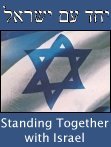

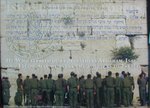
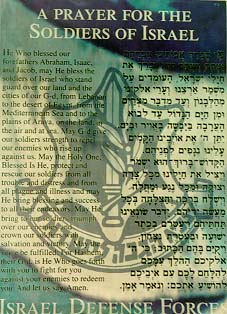
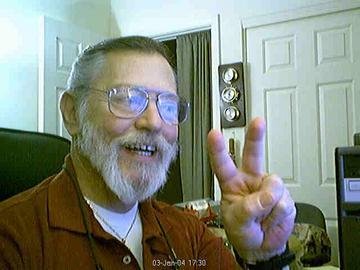










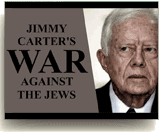
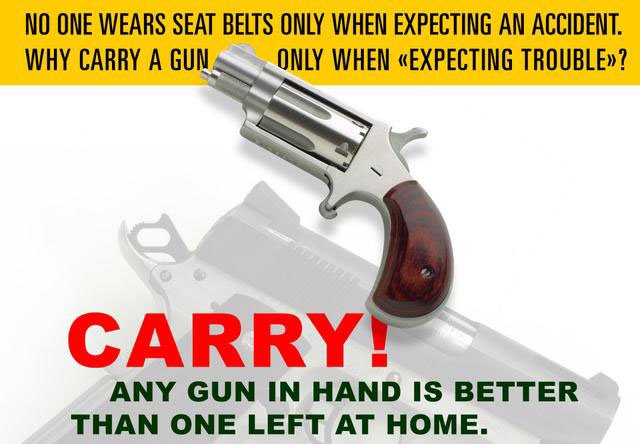
 While doing IDF (Israel Defence Forces) reserve duty on a mountain overlooking the
While doing IDF (Israel Defence Forces) reserve duty on a mountain overlooking the 

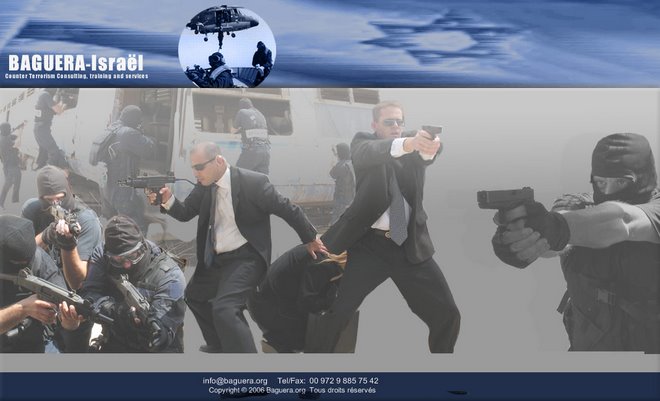



No comments:
Post a Comment